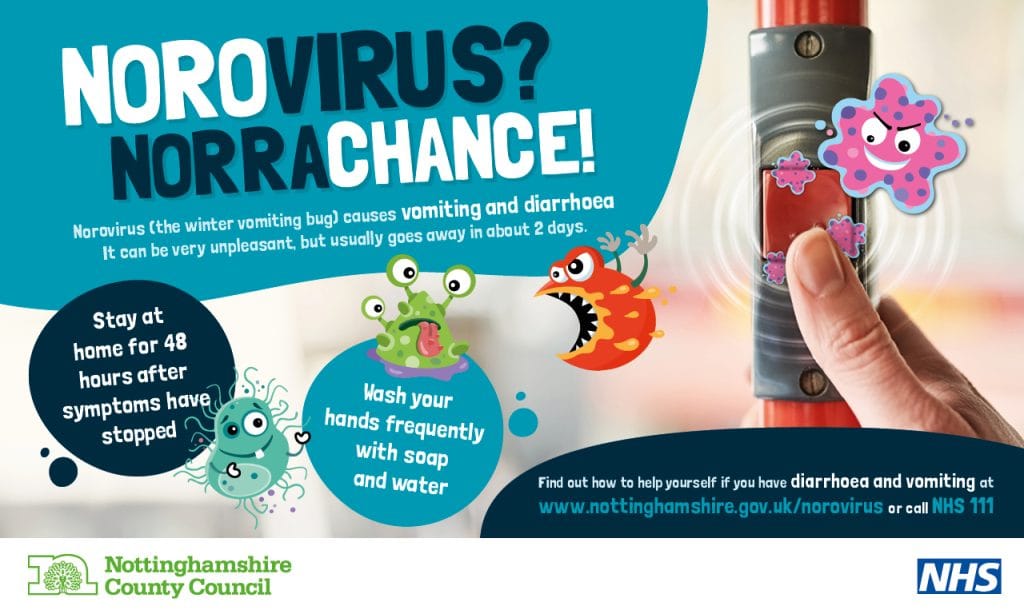Norovirus, a highly contagious virus known for causing gastroenteritis, is experiencing a significant uptick in cases this winter. Health officials have reported an increase in outbreaks across various regions, raising concerns about the virus’s impact on public health. Norovirus is notorious for its ability to spread rapidly, particularly in crowded environments such as schools, nursing homes, and cruise ships. This article aims to provide an overview of the factors contributing to the current rise in norovirus cases and offers guidance on effective preventative measures.
One of the primary reasons for the spike in norovirus cases this winter is the seasonal nature of the virus. Norovirus outbreaks often peak during the winter months, coinciding with colder weather and increased indoor gatherings. As people spend more time indoors, the likelihood of person-to-person transmission increases. The virus can be transmitted through contaminated food, surfaces, or direct contact with an infected individual. This winter, the combination of holiday gatherings and colder temperatures has created an environment conducive to the virus’s spread.
Another contributing factor to the rise in norovirus cases is the relaxation of public health measures that were previously in place to control the spread of infectious diseases. During the height of the COVID-19 pandemic, many communities adopted strict hygiene protocols, including frequent handwashing, mask-wearing, and social distancing. However, as these measures have been lifted, there has been a decline in the general public’s adherence to hygiene practices. This lapse in vigilance has allowed norovirus to proliferate more easily, particularly in communal settings.
The symptoms of norovirus infection typically include nausea, vomiting, diarrhea, and stomach cramps. These symptoms can appear suddenly and may last for one to three days. While most individuals recover without requiring medical attention, norovirus can lead to severe dehydration, particularly in young children, the elderly, and individuals with weakened immune systems. As such, it is essential for individuals to recognize the signs of norovirus infection and seek medical care if symptoms worsen or do not improve.
Preventing the spread of norovirus requires a multifaceted approach focused on hygiene and sanitation. One of the most effective ways to reduce the risk of infection is through proper handwashing. Individuals should wash their hands thoroughly with soap and water for at least 20 seconds, especially after using the restroom, before eating, and after caring for someone who is ill. Hand sanitizers may be used as an additional measure, but they are not a substitute for handwashing, particularly in the case of norovirus.
Food safety is another critical aspect of preventing norovirus infections. Individuals should ensure that food is prepared safely and that surfaces are cleaned and sanitized regularly. It is crucial to wash fruits and vegetables thoroughly and to cook seafood to safe temperatures. Additionally, individuals should avoid preparing food for others if they are experiencing symptoms of norovirus or have recently been infected.
Cleaning and disinfecting surfaces that may be contaminated with norovirus is essential, particularly in shared environments. High-touch surfaces, such as doorknobs, light switches, and countertops, should be cleaned regularly with a bleach-based cleaner or another effective disinfectant. If an outbreak occurs, it is important to isolate the affected individual and to thoroughly clean the area where they were present.
In the event of a norovirus outbreak, public health officials may issue advisories to inform the community and provide guidance on how to minimize the risk of further transmission. It is important for individuals to stay informed about local outbreaks and to follow any recommendations provided by health authorities.
In summary, the rise in norovirus cases this winter can be attributed to seasonal factors, changes in public health practices, and the virus’s highly contagious nature. By understanding the symptoms and transmission methods of norovirus, individuals can take proactive steps to protect themselves and others. Emphasizing the importance of hand hygiene, food safety, and thorough cleaning practices can help mitigate the spread of this virus during the winter months.
As the winter season continues, it is crucial for individuals to remain vigilant and informed about norovirus. By following recommended preventative measures and staying aware of any local outbreaks, communities can work together to reduce the incidence of norovirus infections and safeguard public health.



